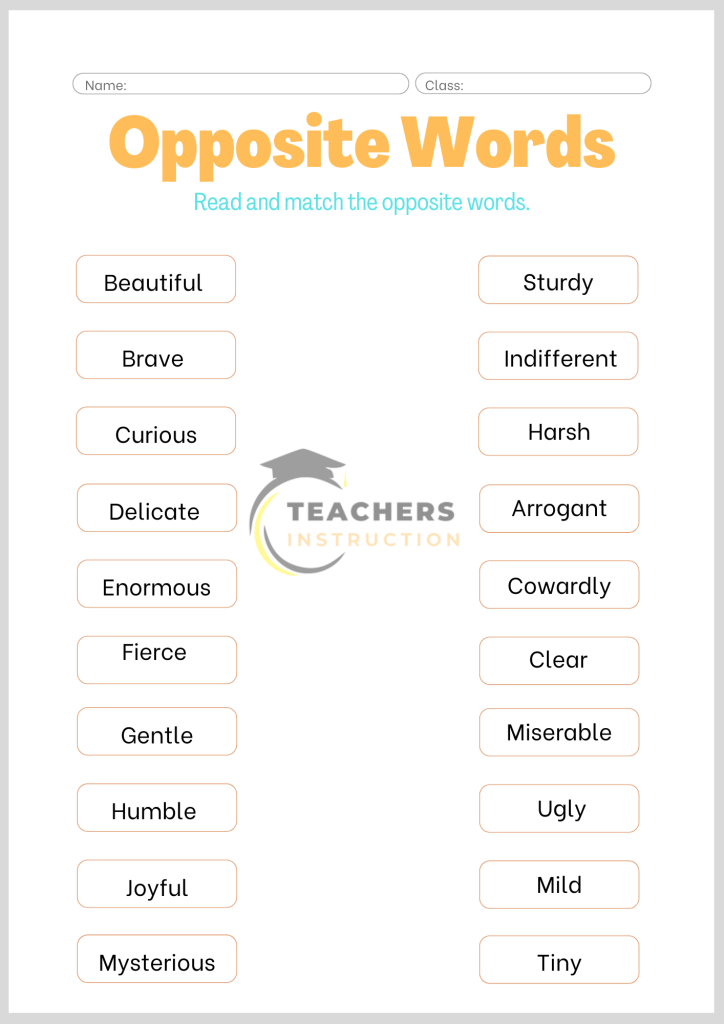Learning opposite words is a fundamental part of language development for young learners. The Opposite Words Worksheet is a fantastic way to help children grasp this concept effectively.
This engaging worksheet is designed to make learning fun and interactive, allowing kids to match words with their opposites through various activities. By incorporating this worksheet into your teaching routine, you can enhance vocabulary, comprehension, and critical thinking skills enjoyably.
Let’s dive into how the Opposite Words can be a valuable resource in your educational toolkit.
Opposite Words Worksheet
Download this worksheet print it, give it to your kids, and tell them to read and match the opposite words.

Adjectives and their opposite words
- Beautiful
- Brave
- Curious
- Delicate
- Enormous
- Fierce
- Gentle
- Humble
- Joyful
- Mysterious
Opposite Words
- Beautiful – Ugly
- Brave – Cowardly
- Curious – Indifferent
- Delicate – Sturdy
- Enormous – Tiny
- Fierce – Mild
- Gentle – Harsh
- Humble – Arrogant
- Joyful – Miserable
- Mysterious – Clear
What Are Opposite Words?
Opposite words, also known as antonyms, are words that have contrasting meanings. For example, “hot” and “cold,” “big” and “small,” or “happy” and “sad.” These pairs of words help express differences and contrast in language, providing a clearer understanding of various concepts and ideas. Learning opposite words helps children and language learners to articulate themselves more precisely and enrich their vocabulary.
Why Is It Important?
Understanding and using opposite words is crucial for several reasons:
- Enhanced Vocabulary: Learning antonyms expands a child’s vocabulary by introducing them to a wider range of words.
- Improved Communication: Knowing opposite words allows for more precise and varied communication, enabling children to express themselves more clearly and effectively.
- Critical Thinking: Recognizing and understanding contrasts between words helps develop critical thinking skills. It encourages learners to think about the relationships between words and concepts.
- Reading Comprehension: A strong grasp of antonyms aids in better understanding of reading materials, as it allows children to make sense of text by understanding context and contrasts.
- Creative Writing: In creative writing, the use of antonyms can add depth and variety, making the writing more interesting and engaging.
Incorporating opposite words into learning activities, such as the “Opposite Words Worksheet,” is an excellent way to help children grasp these concepts and apply them in their daily language use.
Conclusion
Incorporating the opposite words worksheet into your child’s learning routine can significantly boost their language skills. This worksheet not only makes learning fun but also helps children understand the concept of opposite words more deeply.
